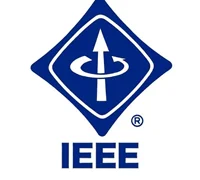دانلود ترجمه مقاله کنترل سیستم مجتمع بدون حسگر PMSM بر پایه SMO
| عنوان فارسی |
کنترل سیستم مجتمع بدون حسگر PMSM بر پایه SMO بهینه سازی شده |
| عنوان انگلیسی |
Sensor-Less Complex System Control of PMSM Based on Improved SMO |
| کلمات کلیدی : |
PMSM؛ SMO با بازخورد حلقه بسته؛ PLL بهینه شده |
| درسهای مرتبط | ماشین های الکتریکی |
| تعداد صفحات مقاله انگلیسی : 5 | نشریه : IEEE |
| سال انتشار : 2021 | تعداد رفرنس مقاله : 10 |
| فرمت مقاله انگلیسی : PDF | نوع مقاله : ISI |
|
پاورپوینت :
ندارد سفارش پاورپوینت این مقاله |
وضعیت ترجمه مقاله : انجام شده و با خرید بسته می توانید فایل ترجمه را دانلود کنید |
1. مقدمه 2. طراحی SMO معمولی 3. SMO بر پایه بازخورد حلقه بسته 4. تحلیل شبیه سازی 5. نتیجه گیری

چکیده – سیستم کنترل بدون حسگر PMSM، پیچیده است و برای انجام مدل سازی ریاضی دقیق و تحلیل شبیه سازی اهمیت زیادی دارد. اندازه PMSM کوچک است، بازدهی بالا و نویز کمی دارد، بنابراین در کاربردهای موتور AC بسیار معمول است. از آن به طور گسترده در کاربردهای الکتریکی مختلفی مانند ابزارهای ماشین، روبات ها، و لوازم خانگی استفاده شده است. برای کاهش ضربات فرکانس بالای راهبرد کنترل بدون حسگر موتورهای سنکرون مغناطیس دائمی، یک روش کنترل بدون حسگر بر پایه SMO بهینه شده پیشنهاد می شود. جزء نیروی محرکه الکتریکی معکوس در سیستم مختصات ایستا از طریق SMO به دست می آید. جزء نیروی محرکه الکتریکی معکوس دستخوش بازخورد حلقه بسته می شود تا اجزاء فرکانس بالا تقلیل داده شوند. جزء نیروی محرکه الکتریکی معکوس با یک PLL بهینه سازی شده محاسبه می شود تا موقعیت و سرعت روتور به دست آید تا عملکرد سیستم بهتر شود. در پایان مقاله، امکان پذیری این روش با مقایسه آن با شبیه سازی SMO-PLL معمولی ثابت می شود. مقدمه: با گسترش تدریجی کاربرد فناوری شبیه سازی در حوزه های مختلف پژوهشی و کار مهندسی، سیستم ها و مدل های شبیه سازی بیشتری در حوزه های مختلف به وجود می آید. ساخت مدل های سیستم صحت و با دقت بالا شامل تجمیع سطوج مختلف مدل هایی مانند سیستم ها، سیستم های فرعی و اجزاء می شود. تضمین بازدهی بالا، هزینه کم، و قابلیت اطمینان بالای کاربردهای شبیه سازی نیاز ضروری و تمرکز اصلی این شبیه سازی سیستم کمپلکس کنونی است. کاربرد حسگرهای موقعیت و سرعت یک روش سریع و کارآمد برای اندازه گیری مستقیم اطلاعات PMSM سرعت و موقعیت روتور است. با این حال این روش هنوز هم معایبی مانند حجم بزرگ، هزینه بالا، الزامات زیست محیطی بیشتر (من جمله سرب) دارد. در دهه های اخیر بسیاری از دانشمندان برای غلبه بر تاثیر حسگرهای مکانیکی موقعیت بر هزینه و قابلیت اطمینان سیستم های کنترل، روش های کنترل بدون حسگر PMSM را مطالعه کرده اند [1]، و روش های مختلف کنترل بدون حسگر موتور سنگرون مغناطیس دائمی به طور موفق فعال شده است. هم اکنون روش های کنترل بدون حسگر PMSM نصب شده در سطح بیشتر شامل روش تزریق سیگنال فرکانس بالا و روش نیروی محرکه الکتریکی معکوس می شود که به ترتیب برای حوزه های سرعا پایین و سرعت بالا-متوسط مناسب هستند. فناوری کنترل بدون حسگر عموماً به این معناست که در سیستم کنترل سرعت، هیچ حسگر مکانیکی برای اندازه گیری مستقیم موقعیت و سرعت روتور موتور نصب نمی شود، بلکه سیگنال الکتریکی موتور برای ارزیابی اطلاعات سرعت و موقعیت روتور از طریق یک الگوریتم بکار گرفته می شود. SMO بخاطر مزایایی مانند کمتر تحت تاثیر تغییرات پارامترهای موتور قرار گرفتن، تداخل بیرونی قوی، و زمان پاسخ کوتاه برجسته شده است [2].
The sensor-less control system of PMSM is complicated, and it is of great significance to carry out accurate mathematical modeling and simulation analysis. PMSM is small in size, high in efficiency, and low in noise, so it is very popular in AC motor applications. They have been widely used in various electrical appliances such as machine tools, robots, and household appliances. In order to reduce the high-frequency chatter of the sensor-less control strategy of permanent magnet synchronous motors, a sensor-less control method based on improved SMO is proposed. The back-EMF component in the static coordinate system is obtained through the SMO. The back-EMF component undergoes closed-loop feedback to eliminate the high-frequency components. The back-EMF component is calculated by an improved PLL to obtain the position and speed of the rotor to improve system performance. At the end of the article, the feasibility is proved by comparing it with the simulation of conventional SMO-PLL. INTRODUCTION: With the gradual expansion of the application of simulation technology in various fields of research and engineering practice, there are more and more simulation systems and models in various fields. The construction of fidelity and high-precision system models involves the integration of different levels of models such as systems, subsystems, and components. Ensuring the high efficiency, low cost, and high reliability of simulation applications is the urgent need and focus of current complex system simulation. Using position and speed sensors is a quick and effective method to directly measure information of PMSM of the rotor speed and position. However, this method still has disadvantages such as large volume, high cost, many leads, and increased environmental requirements. To overcome the impact of mechanical position sensors on the control system's cost and reliability, many scholars have studied the sensor-less control methods of PMSM in recent decades [1] , and various permanent magnet synchronous motor sensor-less control methods have been successively popped up. At present, the sensor-less control methods of surface-mounted PMSM mainly include the high-frequency signal injection method and back-EMF method, which are respectively suitable for low-speed and medium-high-speed areas. Sensor-less control technology generally means that in the speed control system, no mechanical sensor is installed to directly measure the position and speed of the motor's rotor, to use the measurable electrical signal of the engine to estimate the rotor’s speed and position information through an algorithm. The SMO stands out due to its advantages, such as being less affected by motor parameter changes, robust external interference, and short response time [2].
محتوی بسته دانلودی:
PDF مقاله انگلیسی ورد (WORD) ترجمه مقاله به صورت کاملا مرتب (ترجمه شکل ها و جداول به صورت کاملا مرتب)



دیدگاهها
هیچ دیدگاهی برای این محصول نوشته نشده است.